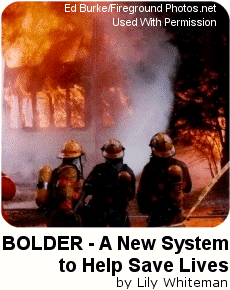![]()

![]()
Firemen drill with
a controlled fire

![]()
![]()
![]()
Immediately
after an abandoned warehouse in Worcester, Massachusetts burst
into flames in December, 1999, two firefighters rushed into the building
to search for survivors. But, without a floor plan, they quickly became
lost in the dark and smoky corridors. So, four more firefighters followed
the pair into the inferno. They, too, quickly became lost. Soon after,
the warehouse collapsed, killing all six firefighters. Leaving a total
of seven children fatherless, the disaster was the nation's deadliest
for urban firefighters in 20 years.
Intensifying
the tragedy of the firefighters' deaths was the experts' belief that the
disaster could have been prevented if the firefighters had been given
a floor plan of the warehouse. In all likelihood, they would have escaped
the building in time to avoid its collapse.
Information and Education Gaps
Missing floor plans aren't the only types of information gaps that can compound the human and economic costs of industrial fires, explosions, spills, and other catastrophic events. Indeed, the effects of countless industrial accidents have been exacerbated by the lack of basic information and education about the locations of doors or shut-off valves, or the best emergency response options.